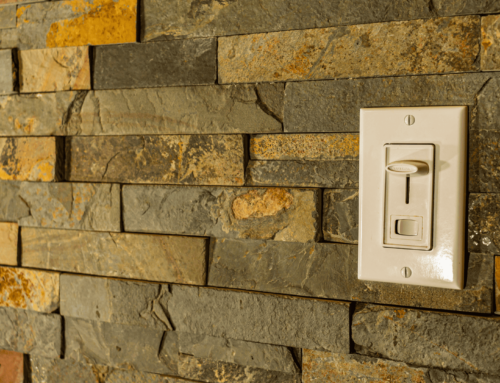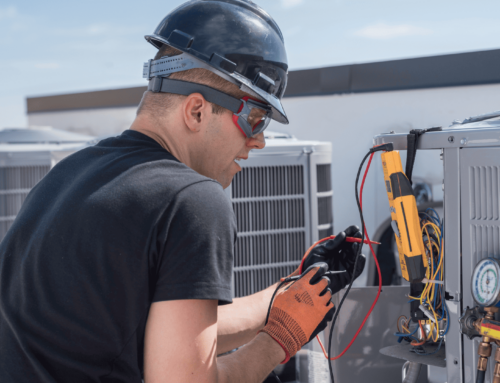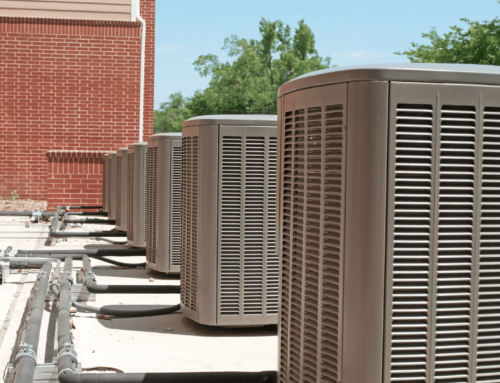
Fireplace
If you’re lucky enough to own a fireplace, heating your home without electricity isn’t a major problem. A roaring fire distributes warm air quickly, although huddled up near it is probably the place you’ll want to be.
While fireplaces are inexpensive, they require fuel and preparation. It’s estimated that a 1,000-square-foot home uses three cords of wood per season. However, households that run their fireplace nonstop (during a blizzard, for example) use considerably more: roughly one cord every seven days.
In addition, to prevent fumes from blowing back into your house, have your chimney cleaned before winter sets in. Clearing out the soot and ash protects your health while ensuring the fire burns better.
Pellet Stove
Similar to a wood stove, a pellet stove burns recycled sawdust and wood shavings. Though they cost more than a fireplace, they’re far more efficient. They burn cleaner and release less fumes while generating an incredible amount of heat. What’s more, they come in a variety of sizes, making it easy to find one suited to your home no matter how big or small it is.
Propane Heater
Propane burns cleaner than wood or pellets. It’s easy to stock and never expires, so if you don’t use it this season, you can keep it until the next season or the one after that. However, while propane heaters are efficient, they require strong ventilation to prevent a buildup of carbon monoxide. If you can, purchase a vent-free heater, which is safe to use in enclosed spaces.
Kerosene Heater
Like propane heaters, kerosene heaters are efficient but produce dangerous fumes. Fortunately, ventless options are available that can be used safely indoors. Kerosene is cheaper than propane but has a limited shelf life: of 2-5 years. And, unlike a fireplace or pellet stove, kerosene heaters produce radiant heat, which means they won’t warm the air. You’ll need to stay close to feel their effects.
Catalytic Heater
Unlike most other heating methods, catalytic heaters are entirely flameless. They produce heat through chemical reactions instead. While there are several types, most run on propane or natural gas (they act as catalysts inside the machine). Though the majority are safe to use indoors, always check the technical specifications before buying one.
Alcohol Heater
Lightweight, portable, and clean, alcohol heaters are ideal for small spaces. They run on denatured alcohol, which burns clean ‒ no smoke or carbon monoxide. Alcohol is also inexpensive and has no shelf life, making it one of the most cost-effective ways to heat a room without electricity.
Soapstone Heater
While soapstone doesn’t generate heat, it absorbs it incredibly well. Place one next to your fireplace, stove, or heater (do not microwave) for several hours. After soaking up radiant heat all day, you can run it across your bed sheets to warm them or wrap it in a blanket or towel and place it at the foot of the bed . It will be hot to the touch, so be careful and wear gloves while carrying it.
Tips for Staying Warm Without Electricity
Though alternate heaters allow you to heat a room without electricity, homeowners should take every chance they can to enhance their effectiveness. Follow these tips to stay as warm as possible during a power outage.
- Create a Heat Room. It’s impossible to heat every room in your house with the methods listed above. Better instead to concentrate on one or two rooms, where your heater can do the most good. Choose a room that’s well insulated, with a carpet, if possible. Carpets absorb heat and prevent warmth from leaking out through the floor. In extreme cases, your family should sleep in the heated room as well.
- Wear Layers. Blankets and thick clothing don’t just trap body heat, they trap radiant heat as well. Therefore, the more layers you wear, the more effective your heating techniques will be.
- Open Curtains During the Day. Direct sunlight is one of the cheapest and most effective ways to heat a room. Keep the curtains open to soak up as much as possible during the day. However, be sure to close them once the sun goes down or the heat you absorbed will be gone just as quickly.
- Keep Doors Closed. Allowing cold air to circulate undermines every effort to heat rooms without electricity. Close every door inside your home to minimize drafts and concentrate heat on you,your family, and your pets.
Protecting Your Electrical System
Homeowners rely on their electrical system year-round, but especially during the winter. Make sure it’s protected with a Homesential warranty. There are no service fees, deductibles, or out-of-pocket expenses for covered parts. You pay only a small, monthly premium – peace of mind for less than what you spend every day on coffee. We also cover your furnace/boiler to ensure your comfort in the cold winter months. Click to shop coverage and start saving today!






